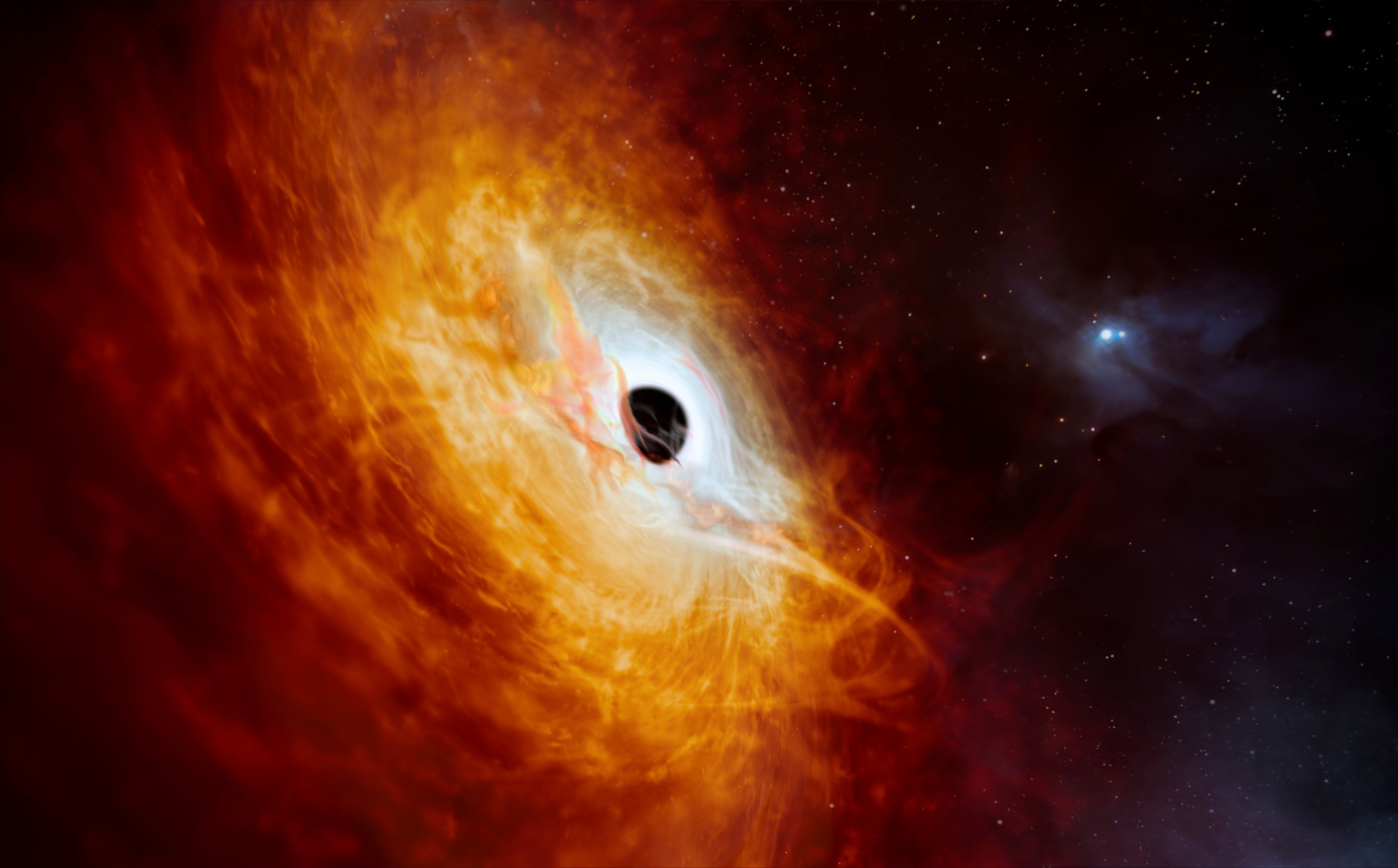Scientists find what might be the brightest object in existence
Black hole powering newly discovered quasar is eating the equivalent of our Sun every day
Astronomers believe they might have found the brightest object in existence.
The blazing object appears to be a quasar. It is powered by a blackhole that is growing so fast it eats the equivalent of our Sun each day.
The record-breaking quasar shines 500 trillion times brighter than our sun. The black hole powering this distant quasar is more than 17 billion times more immense than our sun, an Australian-led team said.

Scientists have catalogued around a million quasars already. But the most difficult ones to find seem to be those that are brightest – including the newly discovered example, which was initially mistaken for a star.
While the quasar resembles a mere dot in images, scientists envision a ferocious place.
The rotating disk around the quasar’s black hole — the luminous swirling gas and other matter from gobbled-up stars — is like a cosmic hurricane.
“This quasar is the most violent place that we know in the universe,” lead author Christian Wolf of Australian National University said in an email.
The European Southern Observatory spotted the object, J0529-4351, during a 1980 sky survey, but it was thought to be a star. It was not identified as a quasar — the extremely active and luminous core of a galaxy — until last year. Observations by telescopes in Australia and Chile’s Atacama Desert clinched it.
“The exciting thing about this quasar is that it was hiding in plain sight and was misclassified as a star previously,” Yale University’s Priyamvada Natarajan, who was not involved in the study, said in an email.
These later observations and computer modeling have determined that the quasar is gobbling up the equivalent of 370 suns a year — roughly one a day. hat might be close to the Eddington limit, which is believed to be the upper limit of how much such an object can grow.
Further analysis shows the mass of the black hole to be 17 to 19 billion times that of our sun, according to the team. More observations are needed to understand its growth rate.
The quasar is 12 billion light-years away and has been around since the early days of the universe. A light-year is 5.8 trillion miles.
The findings are reported in a new study, ‘The accretion of a solar mass per day by a 17-billion solar mass black hole’, published in Nature Astronomy.
Additional reporting by Associated Press
Join our commenting forum
Join thought-provoking conversations, follow other Independent readers and see their replies
Comments
Bookmark popover
Removed from bookmarks